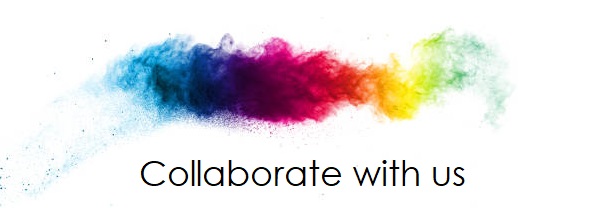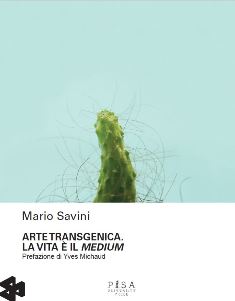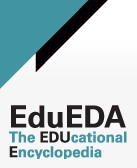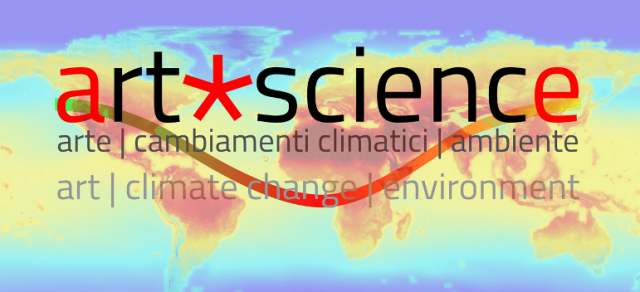The New Initiative in the Ars Electronica Festival
With the intention to extend the liminal research on the market of Media Art, the Ars Electronica festival 2017 dedicated a wide space of its program to the art economy. Gallerists, theorists, artists, collectors and entrepreneurs have been gathering together during the days of the festival, exchanging issues, solutions and opinions, that are bound to the commercial sector of Media Art.
Ars Electronica festival is a very well known and established event that takes place every year in Linz since 1979. During its history, this festival has profoundly contributed to the development of the art forms that are engaged with science and technology. This latest edition, that happened from the 7th to 11th September, had Artificial Intelligence as the main theme. However, one of the biggest novelties of the festival has been the introduction of the Art Market Initiative. Indeed, for the first time, Ars Electronica invited representative personalities of the art market world, attempting to bridge the gap between the Media Art scene and the traditional art system.
The Art Market Initiative was composed by several activities: the "Media Art and the Art Market II" symposium and round tables, "Gluon Session" and "Gallery Spaces". The large basement of Post City: the location that since few years is hosting most of the contents of Ars Electronica festival, have been used to host the Gallery Spaces. Following the idea of reproducing the settings of an art fair, this format consisted in an exhibition where art galleries, that deal Media Art, were invited to show some pieces of the artists they represent. The result has been a long path that crossed all the galleries stands and some works of unrepresented artists, which enriched the journey of the visitors, through the post-industrial atmosphere of the location.
A special event of the festival was also the Gluon session. Stepping slightly over the discussion of the market of Media Art, this format intended to reinforce the dialogue between science and the contemporary art system, proposing a new approach. The discussions that focused more deeply on the topic of Media Art economy were the Media Art and the Art Market II symposium and to the two round table that followed in the next days.
Media Art and the Art Market II. The Symposium
After the success of the first edition of the "Media Art and Art Market" symposium, held at the Lentos Museum of Linz in October 2016, Ars Electronica decided to host an extension of this event. All the contributions introduced in this former event, pictured the current situation of the mixed economy of Media Art.
From this point, the "Media Art and the Art Market II", organized in collaboration with Interface Culture department of the University of Art and Design of Linz, have been conceived for addressing some specific issues that emerged from the previous edition. Mainly, the problems that concern the maintenance as well as the preservation of the delicate nature of software and hardware of technology-based art, have found shared concerns among professionals.
Acknowledging the general economy that supports Media Art, another fundamental aspect is to discuss alternative economic models that might be applied to the distribution and conservation of artworks. For this reason, it is still necessary to observe the experiences of traditional and novel formats of the primary market and art galleries system, focusing on the new platforms that use the Internet for the distribution of art.
The program of the “Media Art and the Art Market II” have been divided into two different but related sections. The first section: “Conservation and Collecting” gave space to representatives of galleries and museums to talk about the solutions and ideas to preserve Media Art.
This symposium has been opened by the speech of Steve Fletcher, who represented both the "Carroll/Fletcher Gallery" and its new project "The Artists Development Agency". With this latest one, Steve Fletcher proposed an innovative form of support for young artists, that aims to help their career by mentoring them through all the main steps. According to him, this has been found necessary to fulfil the gap that exists between the environment and facilities offered by art education and the further needs for the developments of an artistic career. With this intent, "The Artists Development Agency" helps emerging artists to search funding, art residencies and to address their art practice to the proper contexts.
The contribution of Steve Fletcher also invited to reflect on the importance of communicating correctly the idea and the technical/conceptual function of the artworks to the public and to the collectors. Focusing on the issue of art conservation, he stressed out that collecting art is not just matter of ownership, but it is also about assuming the responsibility for the maintenance of the works that are acquired.
The issue of the conservation has been extensively treated by Minoru Hatanaka, who pointed out to the fundamental aspect of producing a rich documentation of the artworks. Bringing the example of the big effort that has been done by the museum of the NTT InterCommunication Center (ICC) in Tokyo, where he is the chief curator, Hatanaka illustrated the strategies adopted to document the artworks. This museum had a collection of some of the most prominent pioneers of Media Art, and it necessitated large resources to conserve the pieces. This brought to the decision of terminating the collection in the year 2000. In order to keep a valuable trace of the collection, it has been conceived an "invisible museum", that consisted of interviews, videos and detailed documentation of the software, data and instructions that concerned the artworks, in a way that they can be studied and reproduced.
Assuming the problem of the conservation, Anita Beckers wish the adoption and development of international standards that are meant to give support for the conservation of technology-based art. This aspect, which is largely debated, should be a priority addressed by universities, museums and all the institutions involved in the art sector. This is deemed necessary to keep a rich cultural heritage that might risk disappearing.
Assuming a more deontological/theoretical perspective, it is important to discuss the technical details that might deeply change the nature of the artworks. Anita Beckers, brings as an example the change of different technical supports of video art: if an artwork was originally made in analogue VHS, should it be made an effort to conserve this format in order to maintain the original medium? What if a conversion of this work to a digital format is affecting the originality of the work?
In addition, attempting to clarify some possible misunderstandings about the relation between art and its market, Anita Beckers underlined the fact that art should be motivated by the needs and wills of the artist, who must be free to express what he wants to do. For this reason, it must be observed a big gap between what artists produce and what is commonly quoted in the art market. In her opinion, this two aspects should not be mixed.
The emphasis on the definition of standards for the technological support, needed for the conservation of artworks, has been a perfect introduction to the following section of the symposium: "New Methods and Formats". Indeed, the next speakers presented online platforms and ecosystems that facilitate the distribution and storage of digital artworks.
The first intervention to this more narrowed topic illustrated the business model and the function of Sedition. This online platform, presented by Ashley Lee Wong, is a complex ecosystem of services that support the various distributions processes, from the acquisition to collection and sale of screen-based artworks.
At a first look, this system seems to offer a simple service to reproduce art contents in several different devices like smartphone, tv, tablets, computers etc... In reality, Sedition offers many more services for artists who want sell their creations and collectors that want to buy art in limited edition, providing a certificate of authenticity that define the ownership of the works. This online platform constitutes a closed marketplace, in which it is possible to trade art pieces, using a series of tools that illustrate the current value of the works available on its internal market.
Expressing the more narrowed aspects of her personal research, Ashley Lee Wong stated that the biggest challenges of the new forms of the art market are about following the technological development, educate the public and finding the right balance between the pricing of artworks. In addition, the speaker is aware that Media Art is increasingly present in the art market. Major developments in the technologies of maintenance and preservation are opening up the ways this art can reinforce its presence in the market.
The presentation of Oren Mosche introduced a system which, similarly to Sedition, aims to facilitate the distribution and management of Media Art projects. However, this platform presents a very fundamental difference and approach than the model used by Sedition. This system, called NIIO, consists in an open ecosystem of services that can host any kind of video artwork without imposing any sort of restriction or exclusivity over them.
The aim of NIIO is to avoid the problems related to the inaccessibility of art contents, the lack of tools and standards for their distribution, collection and preservation. In addition, NIIO intends to give legal as well as commercial support to renew the business model of the art market. Moreover, this platform permits to store descriptions and instructions for the installation of the artworks. It gives a series of cloud-based tools to conserve the information relative to the artworks, it furnishes devices that are specialized to reproduce audio-visual artworks. Another essential function of NIIO is the system that allows controlling a secure transfer of digital contents between the various stakeholders of the art distribution: artists, gallerists, museums and collectors.
In her presentation, Elizabeth Markevitch showed IkonoTV, an internet-based freemium art channel which also offers the opportunity of access to restricted contents with an on-demand format. With a background on the classical art system, Elizabeth Markevitch revealed that her intention in the creation of IkonoTV was to create an open channel for streaming art contents and share it with the general public.
Ikono space, another project that has been introduced by Elizabeth Markevitch, is both a software for art professionals and a new tool for the fruition of art. This advanced system consists of a 3D software that allows to set and reproduce the exhibition space of physical galleries and museums or invent virtual spaces for display art. Indeed, this software permits to elaborate spaces that can be successively experienced with systems of virtual reality. In this way art professionals can test the efficiency of the setting of the space they are planning and the public can experience the exhibitions directly through virtual reality.
Media Art and the Art Market II. The Round Tables
The day after the symposium happened the first of the two round tables. Illustrating the whole initiative "Media Art and the Art Market", launched the previous year and continued now in the context of Ars Electronica, Christa Sommerer, the moderator of this panel, summarized the major issues that have been encountered.
Bringing back the contribution that he offered in his previous speech, Steve Fletcher stressed out again the necessary mindset for collecting Media Art. Indeed, he said that something that is collectable is something that must be preserved and transmitted over time. For this reason, collectors must take the responsibility to maintain the works they acquire.
However, Steve Fletcher advises that the art market is not able to entirely cover the artists activity, especially young ones. The art market is not for everybody, few can enter on it, and very little of them can find on it a sustainable system for their practice. Fletcher suggests that artists should make the art that they like, without believing that they can make money with it. In this sense they should not compromise their practice, trying to please what the market requires.
Sharing this same principle, Anita Beckers adds that: the art market is overrated, there is no space for supporting all the young artists, as well as curators and critics, because the market recognizes who is already established. However, there is the need to support the production of young artists, in order to have new contents available for the market, which cannot just rely on the usual names. Accordingly to Anita Beckers, this issue can be limited with the support of the industry, which can get back, in exchange for funding, new sources of creativity for the production of innovative goods.
The intervention of Sabine Himmelsbach, Director at HeK in Basel, points the spotlight to the difficulties on collecting technical systems like the ones used by net-based and software-based art. For this reason, she organized Conservation Pieces, a series of conferences that intend to connect conservation experts with institutions and professional of the Media Art world. Coming from these experiences, Sabine Himmelsbach stressed out the importance of documenting carefully the works produced, in a way that they can be easily maintained, repaired and eventually reproduced.
Indeed the artist Eduardo Kac express his experience in working with Minitel, an old telematic system developed in France, which nowadays is nearly impossible to find and to reprogram. His problem was about reproducing an old work based on this technology, which now requires an incredible effort for bringing it back to life. In general sense, Eduardo Kac agrees that, at the moment, there are not economically sustainable models that can properly support the production, presentation and collection of Media Art.
Conny Ellersdorfer, an expert in art insurance, added that it is still very rare to find institutions and collectors that decide to make an insurance of Media Art projects. Because of this, it is also difficult to find specific forms of insurance that are accounting the delicacy of technology-based art. Making a larger overview, Franz Wojda illustrated the economic model in which art system usually rely on. With the schematics he showed, he highlighted the importance of considering the art market in its specific geographical context as well as in its referential field.
The second round table of the "Media Art and the Art Market II", concentrated on the new technologies that can support the presentation as well as the preservation of Media Art. This panel, moderated by Andreas Hirsch, saw the participation of Henning Lohner and Oren Mosche.
During the introduction to the discussion, Andreas Hirsch declared that collecting Media Art is an adventure. In this sense, collectors need to acknowledge their responsibility in the acquisition of this kind of works. Because of this reason, Media Art necessitates care and passion, but in return, this kind of art is able to give great satisfaction. Like some other contributors, Andreas Hirsch manifested a deep concern for the documentation of artworks, which is also a fundamental aspect for their conservation.
In the topic of preservation of Media Art, Henning Lohner made a proper example that also demonstrate the statement of Andreas Hirsch. In this example he said that collecting media art is like collecting wine: you conserve it for a period, then soon or later it will stop working and like wine, when it is consumed it is gone. However, discussing his experience as an artist focused on moving image, Henning Lohner express the reasons of producing works based on a system that is specific, in term of hardware, to the contents of his creations. The development of this strategy has been motivated by the fact that the devices commonly used to reproduce screen-based art, are not created to exhibit artistic contents, but usually, they are adapted to this function.
While illustrating the functionality of NIIO, Oren Mosche stated that Media Art, Digital Art and Video Art are probably the most important heritage of our era, so we need to find the right strategies to conserve the artworks. In addition, he recognizes that the classical art market is based on an obsolete business model. However, it makes sense to maintain its format, even if, at the same time, there is also the necessity to update it, embracing the possibilities that the new technologies offer.
Science and Technology in the Contemporary Art: Art System and Art Market
A part of the events that have been part of the "Media Art and the Art Market II", it is important to notice few other formats that have been supportive of the whole Art Market Initiative. Indeed, a possible obstacle to the integration between Media Art and contemporary art can be found in the compatibility between the languages and narratives that are commonly used by both cultural fields.
For instance, the panel called Gluon Session, organized by the Gluon Foundation from Belgium together with Ars Electronica, proposed novel forms of collaboration between artists and scientists, which involve also collectors and institutions. In this event, Hans Ulrich Obrist, Gerfried Stocker and Paul Dujardin, representing the various institutions involved: Serpentine Galleries, BOZAR and Ars Electronica, have discussed the possible integration and dialogue between science and art. At the moment the intention is to create residency programs in which, instead then bringing artists in the scientific contexts, are the scientists to visit the artist studios and to discuss from a different perspective the possible connections between these two worlds.
In conclusion, we can notice that a big effort has been made to establish a fruitful dialogue between what, in the 90s, Lev Manovich used to call Turing-land (Media Art) and the Duchamp-land (contemporary art) [1]. Since the 90s many things have changed in the way these cultural sectors developed and the perception that these two worlds are physiologically incompatible it almost completely disappeared. Artists, as well as many theorists, seems to reject the idea to be incorporated into the frame of a specific field. Indeed they prefer to freely move on the large, complex and fragmented reality of the whole spectrum of cultural production.
The art market is an aspect that should be taken into account for the economic sustainability of Media Art, as well as way of validation and recognition in the circuit of the art system. It must be said that the art market is now constantly growing from the vacuum left by the latest financial crisis [2]. The necessity to renovate the system, as well as filling it with new contents is a great opportunity for Media Art. Certainly, there is also the need to acknowledge that there are several issues that must be carefully observed in the dynamics which are triggered by the commodification of culture. Indeed, it is already known that the centrality of a market-based economy, deeply modify the nature and intentions of a cultural field by reproducing its ideological structure in any single manifestation of the field itself.
[1] Manovich, Lev. "The Death of Computer Art", October 22, 1996. https://rhizome.org/community/41703/
[2] Artprice.com. "Artprice: Contemporary Art Market Annual Report: Turnover up 1,400% in 17 Years With an Average Annual Return of +7.6%". Accessed October 2, 2017. http://www.prnewswire.com/news-releases/artprice-contemporary-art-market-annual-report-turnover-up-1400-in-17-years-with-an-average-annual-return-of-76-648227463.html







